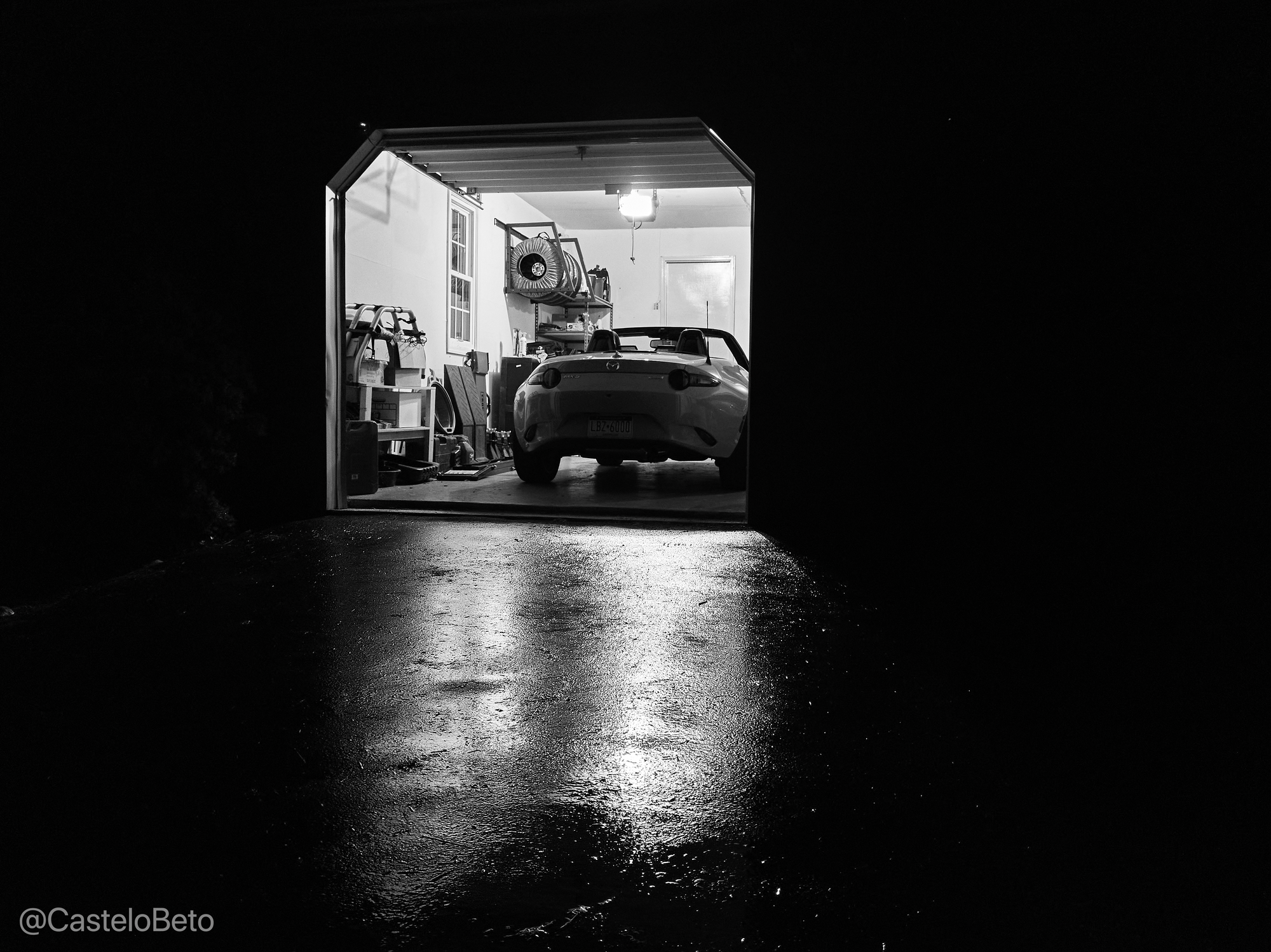The last two weeks were pretty busy on the MX-5 side of things. Last week I had a performance alignment done, and this week I changed the brake pads from the factory issue to a road&track part. I've also flushed the brake fluid and replaced with a higher boiling point fluid.
Suspension alignment can have a significant impact on handling. It can affect the balance between under- and over-steer, stability at speed, corner grip, tire wear, etc. All that (and more!) by tightening/loosening a couple of screws, no extra parts. So, it's a pretty good deal. But the impact is not easy to spot unless you're pushing the car to its limit, which I only do at autocross. So, for now, all I have is high hopes for performance gains. The proof of that pudding will come this Saturday, at the BMC Autocross III event. In the mean time, if you haven't yet, you can hear my thoughts on the alignment numbers on the first episode of the Garage Journals.
Brake pads are a different story. I can definitely take those to the limit in a safe and controlled (and legal) manner, in the backroads where I live. And so I did.
I had been sitting on Pagid Ro1s for about three months now, never getting around putting them on. That is, until the last autocross event gave me the motivation I needed. One of the things I noticed there was that I was not able to get the tires to lock enough to activate the ABS in the car. Actually, to be honest, I was not sure how obvious the activation should be, so it wasn't clear to me if the ABS was activating or not. As a result I was second-guessing my brake application, i.e., I was starting to think that perhaps I was just not going hard enough on the pedal.
Stopping power is a big deal. If you were to plot a graph of your car's speed during a track or autocross event, it should almost never have a horizontal region. It should almost always be either going up or down, accelerating or decelerating. If you're not accelerating hard, you should be braking hard. And in either direction, the forces should be as high as possible, in other words, adding as much speed as possible when the skinny pedal is active, and dissipating as much of it as possible when the middle (yes, middle) pedal is summoned. And while it's usually difficult to improve the acceleration part of that equation, the good news is that the decel part is often a low-hanging fruit on street-legal cars.
So this last weekend I went out to try my brakes. The exercise was to find a safe stretch of back-road, get up to speed and then hit the brakes hard. Come back home, change the pads, then do it again. Here, I made a video.
The results were better than I expected. The Pagids were noticeably more effective at reducing speed, I could actually feel the brake pedal pulsing under the ABS. That's a feeling that I was not able to get from the stock pads after I changed my tires to grippier ones. This is an upgrade that should definitely have an impact on my times.
There will be probably some drawbacks, however. There are good reasons Mazda doesn't ship MX-5s with race-compound brake pads on them. The first one I've already had an opportunity to witness: brake squeal. Under light braking the car now sounds like a bus or a trash truck. OK, maybe a cute little orange trash truck. But still, it's pretty bad. I keep telling myself I don't care, but I do, at least a little bit. But then I pause, breathe in, and repeat The Mantra to myself: Because race car. And move on.
I'm also told that these pads produce more dust, and the pads need to warm up before they can be effective. These sound like things that I can live with, but we'll see how bad it gets. There's always The Mantra.


